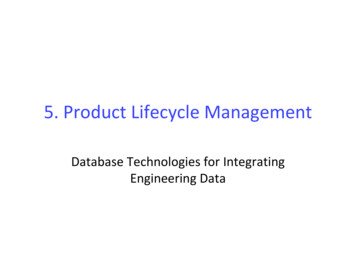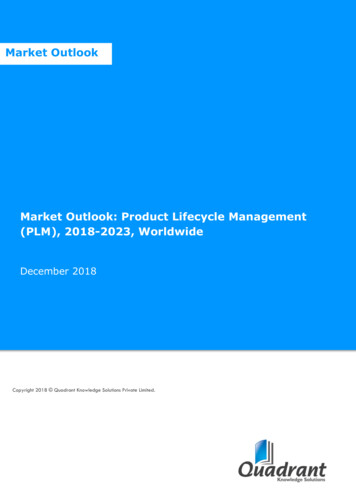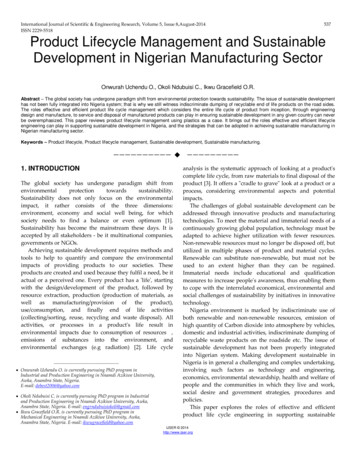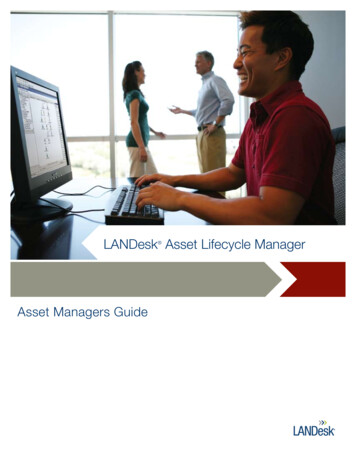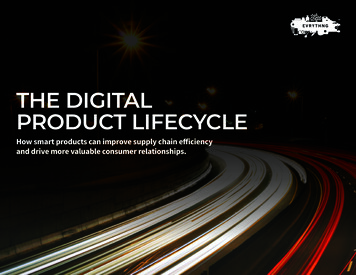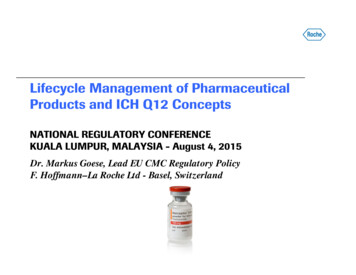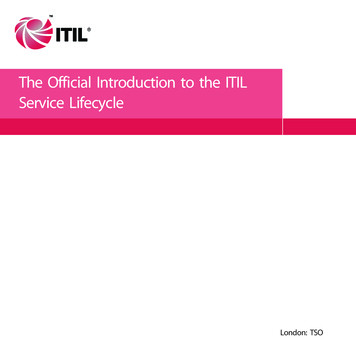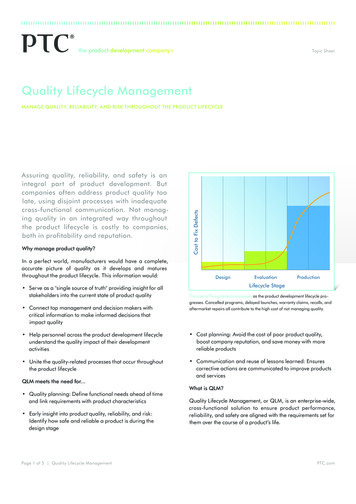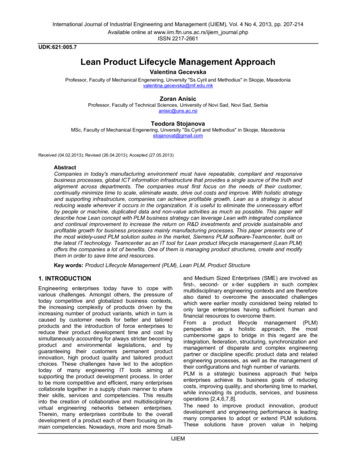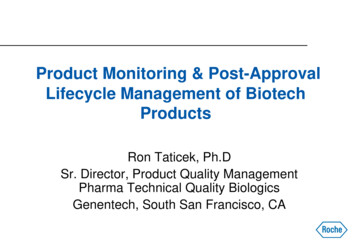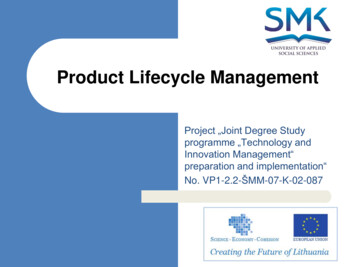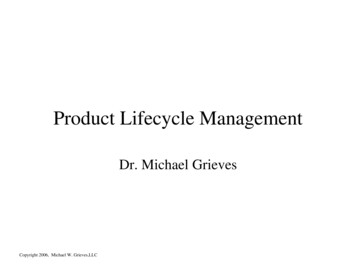
Transcription
Product Lifecycle ManagementDr. Michael GrievesCopyright 2006, Michael W. Grieves,LLC
Copyright 2006, Michael W. Grieves,LLC
Defining PLMProduct Lifecycle Management (PLM) is an integrated,information-driven approach comprised of people,processes/practices, and technology, to all aspects of a product'slife, from its design through manufacture, deployment andmaintenance—culminating in the product's removal from serviceand final disposal. By trading product information for wastedtime, energy, and material across the entire organization and intothe supply chain, PLM drives the next generation of lean thinking.Source: PLM: Driving the Next Generation of Lean Thinking(McGraw-Hill, 2006)Copyright 2006, Michael W. Grieves,LLC
PLM EnablesDesigning to a Requirement Engineers design to a functionalrequirement Requirements are imperfectly mapped tospecifications Issues– Gaps between intended and actual functionality– Over-engineered solutions– Unintended functionality (features or bugs)Copyright 2006, Michael W. Grieves,LLC
Quality Control is a Proxyfor Performance QC is based on causality theory notperformance QC feedback loops are remote andincomplete Warranty and survey data is biased and/orflawed Need in-service integrated dataCopyright 2006, Michael W. Grieves,LLC
Copyright 2006, Michael W. Grieves,LLC
Copyright 2006, Michael W. Grieves,LLC
PLM ModelManufacturing &ProductionSales eringConcept Eng &PrototypingRequirementsAnalysis & PlanningCopyright 2006, Michael W. Grieves,LLCInfoCoreMaintenance &RepairDisposal &Recycling
PLM Functions in Engineering Engineering vaultingPart classification and reuseCollaborative designECMDigital prototypingCopyright 2006, Michael W. Grieves,LLC
Different Views forDifferent FunctionsCopyright 2006, Michael W. Grieves,LLC
PLM ModelManufacturing &ProductionSales eringConcept Eng &PrototypingRequirementsAnalysis & PlanningCopyright 2006, Michael W. Grieves,LLCInfoCoreMaintenance &RepairDisposal &Recycling
PLM Considerations Marketing collateral consistency andtimeliness Operating manuals completeness andaccuracy In-use information capture and usage Disposal procedures and instructionsCopyright 2006, Michael W. Grieves,LLC
In-use InformationCapture and Usage Feedback on– Product quality– Product functions Product liability mitigation New service enablementCopyright 2006, Michael W. Grieves,LLCThe New Yorker March 29, 2004
October 30, 1999Toshiba to Spend 1 Billion to SettleLaptop LawsuitBy ANDREW POLLACKOS ANGELES -- Toshiba Corp. said Friday that itwill spend about 1 billion to settle a class actionlawsuit brought by two people charging that the world'sleading maker of laptop computers sold 5 milliondefective machines in the United States since 1987.Copyright 2006, Michael W. Grieves,LLC
Information Feedback andFeed Forward Feedback design changes Feedback manufacturing changes Feed forward to new designsDesignAnalyzeandEvaluateCopyright 2006, Michael W. Grieves,LLCManufactureUse
Product Lifecycle Management (PLM) is an integrated, information-driven approach comprised of people, processes/practices, and technology, to all aspects of a product's life, from its design through manufacture, deployment and maintenance—culminating in the product's removal from service and final disposal.
